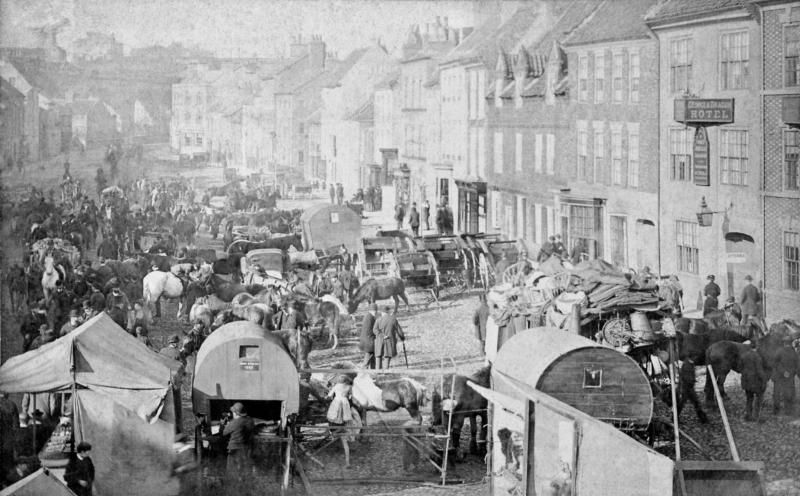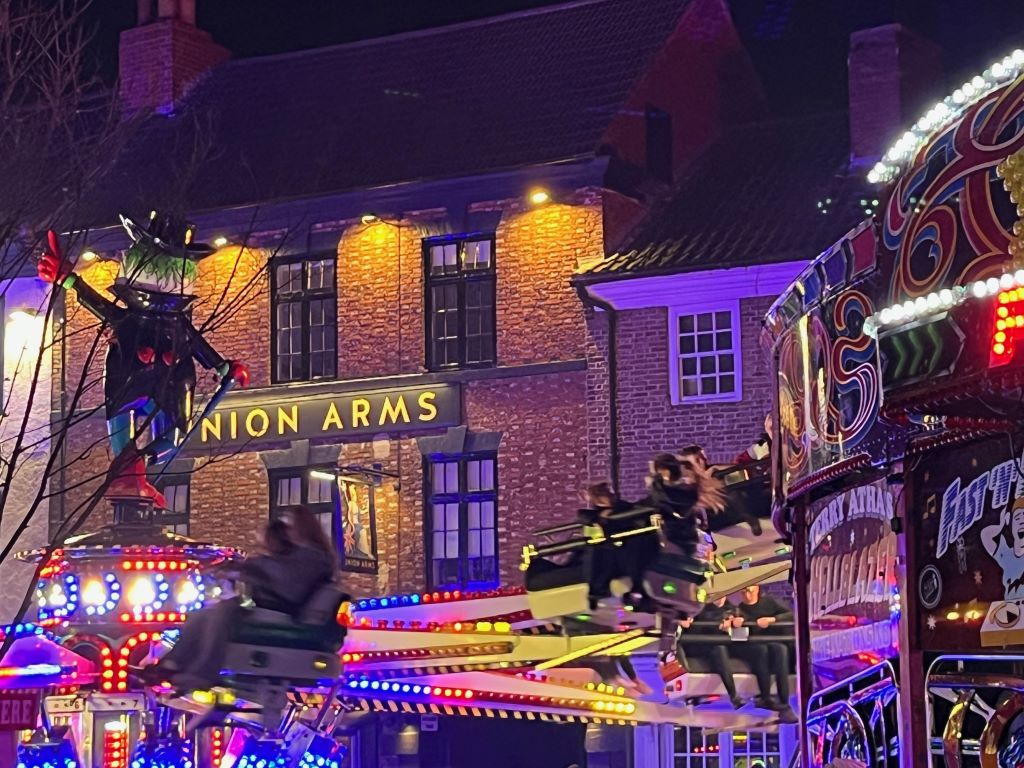Yarm Fair, one of the oldest fairs in the UK, and the fact that it is still a popular event in the town (and Teesside’s) calendar is a testament to the spirit of tradition.
Dating back to 1207, the annual event has been a mainstay of life in the small town of Yarm for over 800 years. While the modern version of the fair might be filled with the bright lights of rides and food stalls, its origins are steeped in medieval history, and its evolution reflects the changes in society over the centuries. In this article, we explore the fascinating history of Yarm Fair, its significant milestones, and the stories that make it a cherished part of Teesside’s cultural life.
The Origins of Yarm Fair
The origins of Yarm Fair can be traced back to the early 13th century, when King John granted the town of Yarm a charter in 1207. This royal decree allowed for a market to be held every week and, crucially, for an annual fair to take place in October. At that time, fairs were an essential part of medieval life, providing a space for traders and farmers from surrounding areas to sell their goods, including livestock, textiles, and food. Yarm’s location by the River Tees made it a prime spot for commerce, attracting people from across the North of England.
The fair soon became one of the most important events in the town’s calendar, drawing in crowds for trade, entertainment, and social gatherings. Medieval fairs like Yarm’s were more than just markets; they were social events, providing a rare opportunity for townspeople and those from surrounding villages to meet, exchange news, and celebrate.
The Evolution of Yarm Fair

Yarm Fair in the 1930s
As the centuries passed, Yarm Fair evolved along with the town itself. By the 18th and 19th centuries, the fair had expanded beyond its initial focus on trading goods and livestock. It began to incorporate more recreational elements, as fairs across the country shifted towards providing entertainment. Showmen brought in rides, games, and performances, and Yarm Fair became as much about fun and festivity as it was about commerce.
Throughout the Victorian period, the fair flourished, and its reputation grew. Yarm’s high street would be transformed for the duration of the fair, with stalls, shows, and even temporary theatres springing up along its length. Horse trading remained a central part of the fair for many years, attracting buyers and sellers from far and wide.
Despite the growth of industry and the rise of urbanization in nearby towns like Middlesbrough and Stockton, Yarm Fair retained its rural roots, and many visitors continued to attend to buy or sell livestock. It became an event where agricultural traditions met the excitement of new forms of entertainment, creating a blend of old and new that remains part of its charm today.
Memorable Moments and Local Legends
Over its 800-year history, Yarm Fair has witnessed its fair share of memorable moments. From grand parades to unexpected weather events, the fair has left its mark on the town’s collective memory.
One such event occurred in the early 20th century, when a sudden downpour turned the high street into a quagmire, but rather than dampening spirits, it only added to the fun, with visitors trudging through the mud and laughing as the rides continued to operate. Local stories recount how people would come to Yarm Fair rain or shine, as the fair was a rare opportunity to break from the routines of daily life and enjoy time with family and friends.
Another memorable aspect of Yarm Fair is the fairground rides that have become synonymous with the event. Generations of Yarm residents recall the thrill of the waltzers, dodgems, and Ferris wheels that light up the night sky. Many families have made it a tradition to attend the fair each year, with stories of parents taking their children on the same rides they once enjoyed as youngsters.
Yarm Fair has also seen its share of local characters, from traders and showmen who’ve been part of the fair for decades, to townspeople whose stories are intertwined with the annual event. These local legends, passed down through generations, help to keep the spirit of the fair alive and contribute to its sense of continuity.
Yarm Fair in Modern Times
Today, Yarm Fair is a vibrant celebration that retains its historic roots while embracing modern entertainment. Held annually in mid-October, the fair continues to attract thousands of visitors. While livestock trading has long since disappeared from the event, the essence of gathering, community, and festivity remains.
The fair is now organized by The Showmen’s Guild, which has been involved in its operation for over a century. Each year, the high street of Yarm is transformed with a variety of fairground rides, food stalls, and attractions, creating a colorful spectacle that draws both locals and visitors from further afield. The opening of the fair is still marked with a traditional proclamation, and the town comes alive with the sights, sounds, and smells of the fairground.
Why Yarm Fair Still Holds a Special Place in Teesside’s Cultural Life

So why, after more than 800 years, does Yarm Fair continue to hold such a special place in the hearts of those who live in Teesside and beyond? The answer lies in its ability to evolve while remaining true to its roots.
At its core, Yarm Fair is about bringing people together. Whether it was medieval merchants selling their wares, Victorian showmen dazzling audiences, or modern families enjoying the latest rides, the fair has always been a place for connection.
Yarm Fair also provides a link to Teesside’s past. It serves as a reminder of the town’s medieval origins and its importance as a hub for trade and commerce. For many, attending the fair is an act of nostalgia, a way to feel connected to their ancestors who walked the same streets centuries ago.
In a world where traditions are often lost or forgotten, Yarm Fair continues to thrive, offering a unique blend of history, culture, and entertainment. It stands as a symbol of resilience, continuity, and community, a living reminder that some things never truly fade away.


